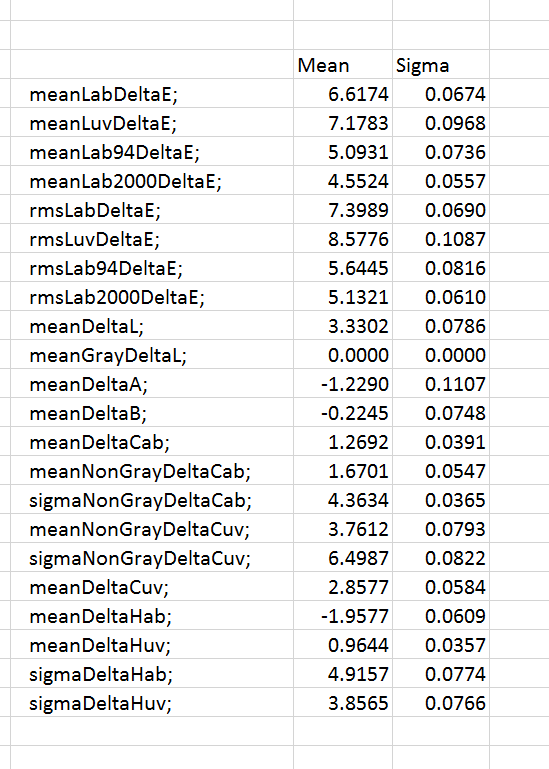This is the 31st in a series of posts on color reproduction. The series starts here.
We have seen that, with nonlinear profiles, Macbeth color accuracy can be affected by exposure. The purpose of this post is to explore the utility of the automatic exposure systems that are built into modern cameras as a tool to minimize these variations.
I took a Sony a7RII, and set it in aperture mode so that it would vary the exposure as I varied the light level. The lens was the Sony 90mm f/2.8 FE macro. The lighting was two Westcott LED panels on full, with the color temperature set to 5000K. I made 11 exposures. The first exposure was with the light intensity set to 100, then 95, then 90, then 85, then 80, and so on, all the way to 50, for roughly 1 stop of dynamic range in tenth-stop intervals. The intervals are actually linear, not logarithmic, but that’s not important for this test.
The simulated reference was lit with D50 light. I developed in Lr with the distinctly nonlinear Adobe Standard profile, and all controls at their default settings except that I white balanced to the third gray patch from the left. I computed the mean and standard deviation (sigma) of a bunch of aggregate color measures.
Here are the resulting statistics:
These results are incredibly precise, with standard deviations (sigmas) two orders of magnitude below the means. It makes me think that the a7RII, although it reports shutter speed in 1/3 stop intervals when it’s in A mode, actually adjusts the shutter more precisely than that. [Edit: I have looked at the gray row values in Lr of the 11 files. The readings for the lightest patch are all withing a few tenths of the nominal Lr value of 89.2. That means that the a7RII metering is much more precise than 1/3 stop. Pretty impressive!]
It’s clear to me that the automatic exposure system in the a7RII can easily deal with the exposure requirements for consistent Macbeth chart results.
Colors in the real world? That’s another story, as anyone who’s tried to master the intricacies of exposure in situations where you’ve got to be bang-on in the camera, like with ‘chrome films. However, that’s really a different issue.

Leave a Reply